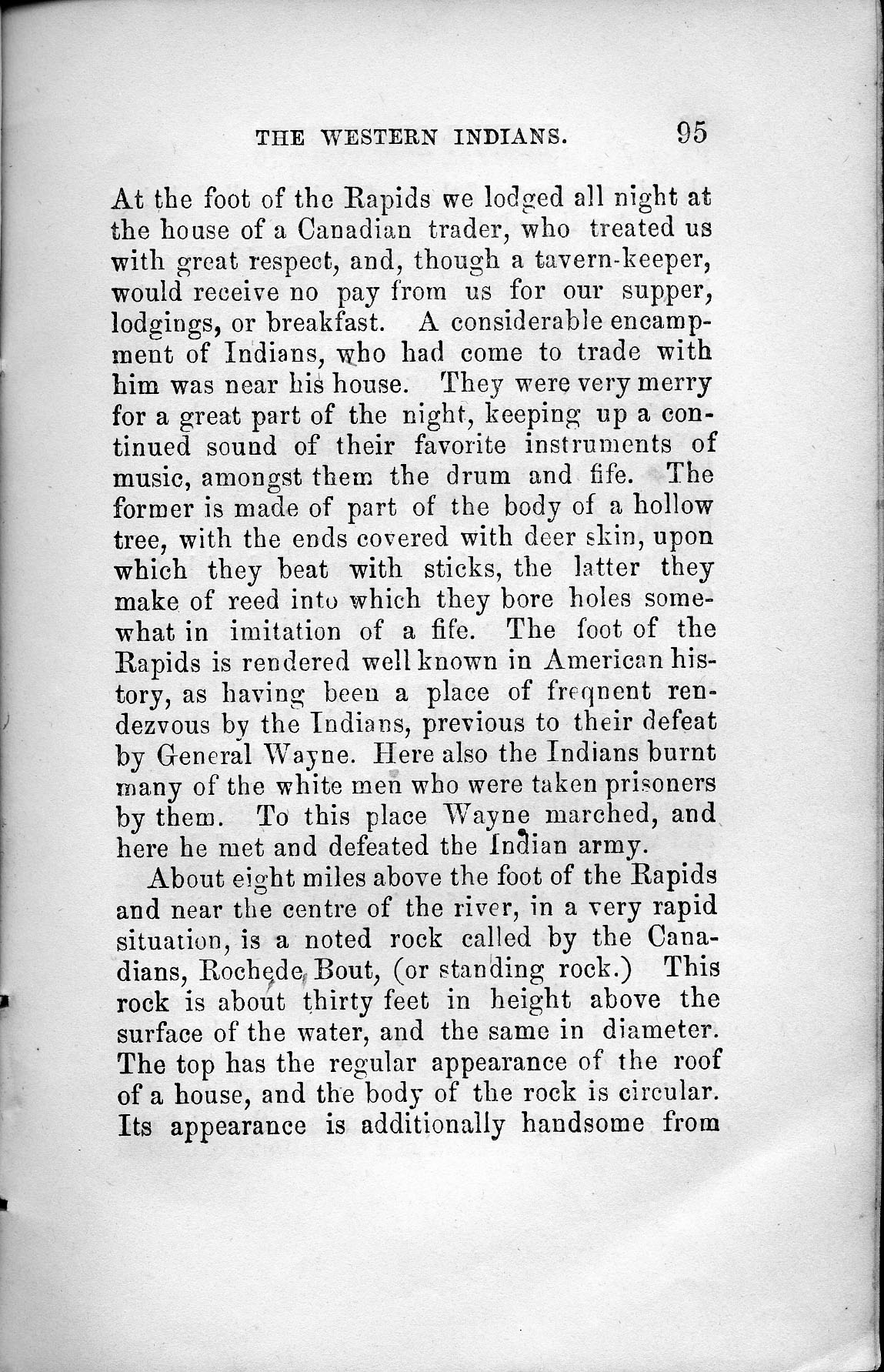At the foot of
the Rapids we lodged all night at
the
house of a Canadian trader, who treated us
with great respect, and, though
a tavern-keeper,
would receive no pay from us for our supper,
lodgings, or breakfast. A considerable encamp-
ment of Indians, who had come
to trade with
him was near his house. They were very merry
for a great
part of the night, keeping up a con-
tinued sound of their favorite
instruments of
music, amongst them the drum and fife. The
former is
made of part of the body of a hollow
tree, with the ends covered with deer
skin, upon
which they beat with sticks, the latter they
make of reed
into which they bore holes some-
what in imitation of a fife. The foot of the
Rapids is rendered well known in American
his-
tory, as having been a place of frequent ren-
dezvous by the
Indians, previous to their defeat
by General
Wayne
many of the white men who were taken prisoners
by them. To this place Wayne
here he met and defeated the Indian army.
About eight miles above the foot of the Rapids
and near the centre of the river, in a very rapid
situation, is a noted rock called by the Cana-
dians, Rochede Bout, (or standing rock.) This
rock is about thirty
feet in height above the
surface of the water, and the same in
diameter.
The top has the regular appearance of the roof
of a house,
and the body of the rock is circular.
Its appearance is additionally
handsome from

